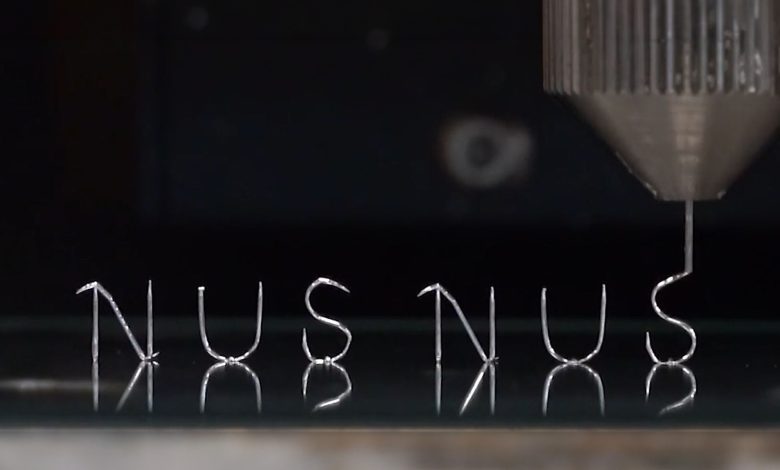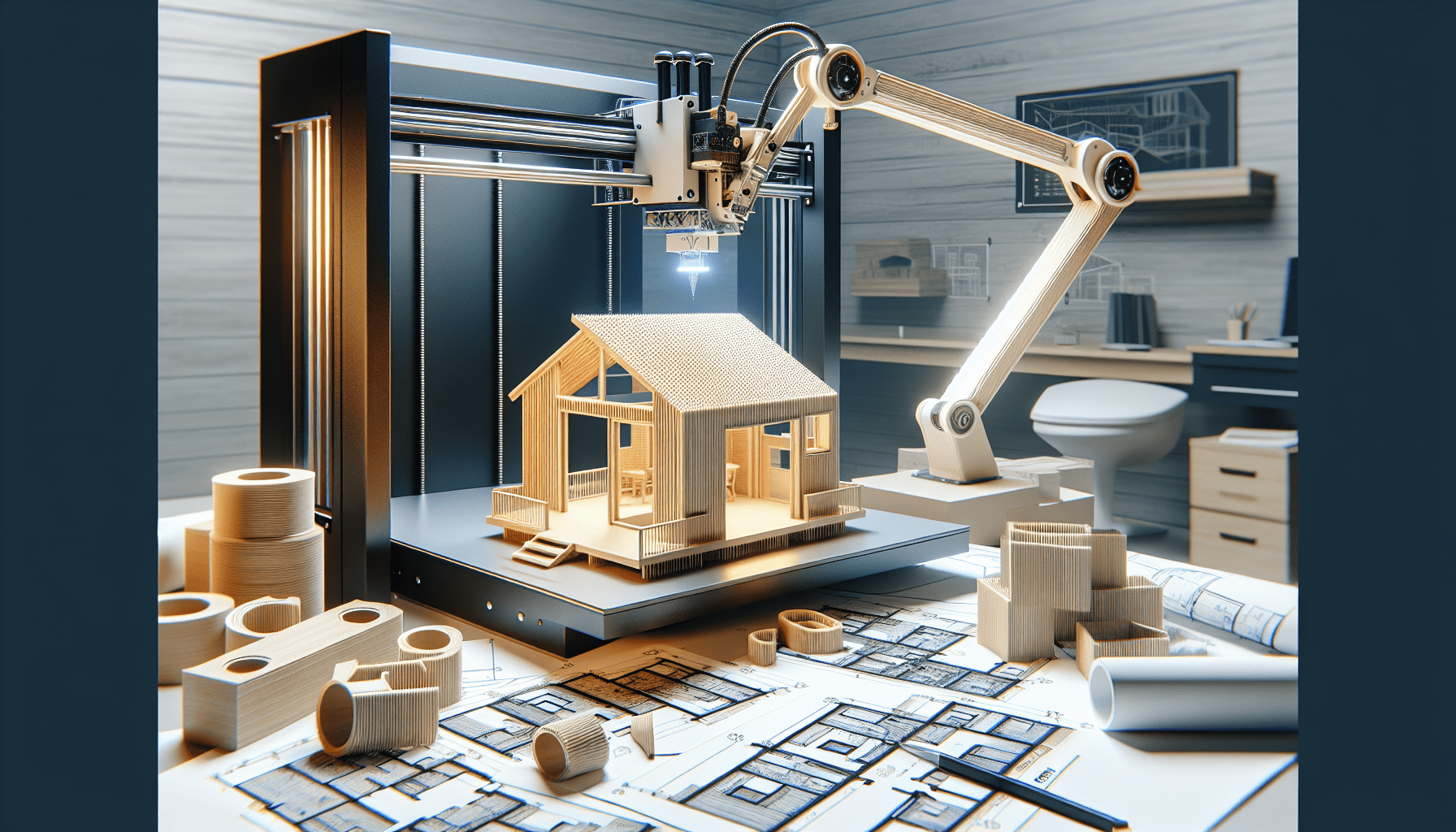Creality K1 SE 3D Printer, with 600 mm/s Printing Speed CoreXY Auto Leveling and Z-Offset, 300℃ Dual-Gear Direct Extruder Full Metal Die Cast Solid Frame Printing Size 8.66x8.66x9.84 inch
$279.00 (as of June 18, 2025 23:32 GMT +00:00 - More infoProduct prices and availability are accurate as of the date/time indicated and are subject to change. Any price and availability information displayed on [relevant Amazon Site(s), as applicable] at the time of purchase will apply to the purchase of this product.)Have you ever imagined a world where electronic circuits are as flexible, resilient, and sustainable as the most advanced materials in our environment? Researchers at the National University of Singapore (NUS) are turning this vision into reality through their pioneering work in 3D printed circuit fabrication. Let’s embark on a journey to understand how this groundbreaking technique, called CHARM3D, promises to revolutionize industries by enhancing healthcare devices, improving communication systems, and bolstering security technologies.

$30 off $400+ Anycubic Products with code AC30OFF
The Birth of CHARM3D: A Tale of Innovation
It’s always a mix of excitement and curiosity when a new technology emerges, and CHARM3D is no exception. CHARM3D stands for “Concomitant Healing And Recyclable Material 3D-printing,” a mouthful that hints at its extraordinary capabilities. Imagine a technique that can create intricate, free-standing 3D structures with high electrical conductivity, self-healing properties, and recyclability – all without needing support materials or external pressure. That’s exactly what CHARM3D, developed by a team led by Associate Professor Benjamin Tee at NUS, seeks to accomplish.
The team has demonstrated the power of this technique using Field’s metal, a eutectic alloy composed of indium, bismuth, and tin. This alloy has a low melting point of 62°C, solidifies rapidly, and boasts excellent conductivity – making it a perfect candidate for CHARM3D.
Streamlining 3D Circuit Manufacturing
Traditional methods of creating 3D electronic circuits have their limitations. Take Direct Ink Writing (DIW), for instance. While DIW has been a go-to technique, it’s plagued by issues such as low conductivity of composite inks and the necessity of support materials. The viscosity of these inks also hampers the printing speed, making the process less efficient.
On the other hand, CHARM3D capitalizes on Field’s metal properties, such as its rapid solidification and low toxicity. By leveraging the tension between molten metal in a nozzle and the leading edge of the printed part, CHARM3D can produce smooth, uniform microwire structures with widths ranging from 100 to 300 microns – roughly the width of human hair.
Comparing CHARM3D and DIW
| Feature | CHARM3D | DIW |
|---|---|---|
| Material | Field’s metal | Composite inks |
| Connectivity | High | Low |
| Support | None required | Required |
| Printing Speed | Up to 100 mm per second | Limited by ink viscosity |
| Resolution | High | Moderate |
With CHARM3D, not only do you achieve faster and more precise printing, but the method also avoids common DIW issues like beading and uneven surfaces.

Buy Photon Mono M5 Get Free 1KG Resin
Diverse Applications: From Healthcare to Security
The versatility of CHARM3D is evident in the myriad applications it supports. Let’s walk through some of the sectors poised to benefit immensely from this revolutionary technique.
Healthcare Innovations
Imagine wearing a piece of smart clothing equipped with sensors that constantly monitor your vital signs without any physical contact. CHARM3D is making this possible by integrating contact-free sensors into wearable devices. Traditional monitoring equipment, such as electrocardiograms and pulse oximeters, require direct skin contact, often causing discomfort and even risk. With CHARM3D, we can develop wearable battery-free temperature sensors and antennas for wireless vital sign monitoring – significantly improving patient comfort and continuous monitoring.
Communication Enhancements
3D printed antennas and electromagnetic metamaterials created with CHARM3D have the potential to revolutionize how we interact and communicate. These components can improve signal sensing and processing applications, leading to better signal-to-noise ratios and higher bandwidths. Specialized antennas crafted through CHARM3D can target communication more effectively, always ensuring you have a clearer signal when you need it the most.
Security Advancements
Security applications also stand to gain significantly from this technology. CHARM3D can help create devices that detect hidden electromagnetic emissions, potentially improving security surveillance and identifying concealed electronic gadgets.

Collaboration and Future Prospects
This ground-breaking endeavor is a result of collaboration between brilliant minds. Apart from Associate Professor Benjamin Tee, the project involves Dr. Zhuangjian Liu from the Agency for Science, Technology and Research’s Institute of High-Performance Computing, and Professor Michael Dickey from North Carolina State University’s Department of Chemical and Biomolecular Engineering.
The team is not stopping here. They plan to extend the CHARM3D technique to other metals and incorporate it into even more complex structural applications. Commercializing this unique metal printing approach is also on the horizon, promising a brighter future for various industries that depend on intricate electronic circuits.

Looking Forward: The Potential Impact of CHARM3D
We’re standing at the frontier of a technological revolution with CHARM3D. This innovative method could significantly reduce production time and costs in electronic circuit manufacturing. Here’s a breakdown of potential impacts:
Increased Efficiency
By eliminating the need for support materials and external pressure, and by using a highly conductive material like Field’s metal, CHARM3D enables faster printing speeds up to 100 mm per second. This efficiency is crucial for industrial-scale productions.
Superior Quality
The method produces detailed and accurate structures, ensuring higher resolution compared to conventional DIW techniques. It allows the creation of complex free-standing 3D structures like vertical letters, cubic frameworks, and scalable helixes.
Enhanced Sustainability
One of the standout features of CHARM3D is the self-healing and recyclable properties of the printed circuits. In an era increasingly focused on sustainability, these features help reduce electronic waste and promote a circular economy in electronic manufacturing.
Broad Industrial Applications
From healthcare to communications to defense, the possibilities with CHARM3D are endless. By enabling the production of more advanced, intricate, and efficient electronic circuits, CHARM3D can drive innovation across various sectors.

Conclusion: Embracing the Future with CHARM3D
The journey of CHARM3D from concept to execution is a testament to the power of innovation and collaboration. It’s an inspiring story of how a dedicated team of researchers from the National University of Singapore has pushed the boundaries of what’s possible in 3D printed circuitry. Whether it’s improving healthcare devices, enhancing communication systems, or boosting security technologies, the applications of CHARM3D are vast and varied.
As we look to the future, it’s clear that CHARM3D has the potential to reshape industries by making electronic circuits more efficient, sustainable, and adaptable. It’s an exciting time to be part of a world where technology and sustainability blend seamlessly to create unparalleled advancements. So, the next time you think about the future of electronics, remember the remarkable possibilities introduced by CHARM3D. Your world is about to get a lot smarter, and it all starts with a little bit of metal and a lot of ingenuity.
$30 off $400+ Anycubic Products with code AC30OFF








